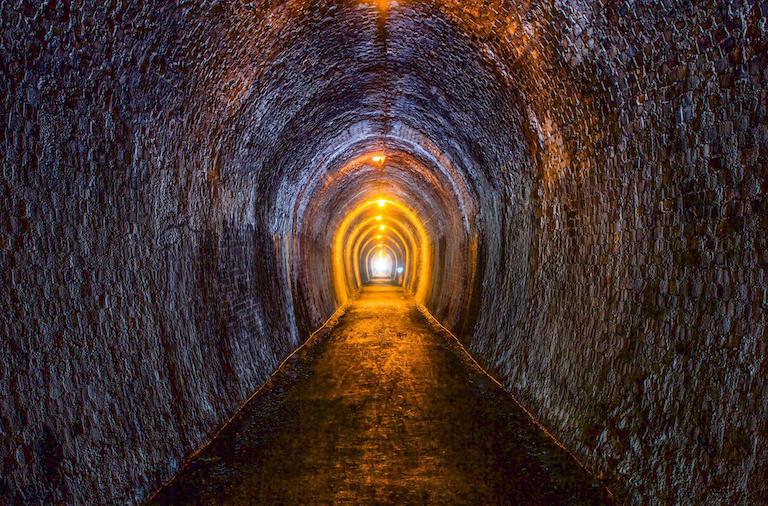
Just an hour south of Auckland lies the Hauraki Rail Trail, one of New Zealand’s 23 Ngā Haerenga Great Rides. Stretching 197km across the North Island’s Coromandel and Hauraki regions, the Grade One cycle trail is among the easiest in the country. Its wide, flat terrain makes it accessible to riders of all ages and abilities, whether on a classic touring bike, e-bike, or even on foot.
What sets the Hauraki Rail Trail apart, is its deep sense of heritage. Every section of the Trail uncovers remnants of New Zealand’s past, with gold mining legacies, Māori history, and early colonial industry, woven into landscapes that remain strikingly intact. A five-day ride reveals this heritage layer by layer, and for a leisurely tour, riders can comfortably traverse one section each day.
Traversing from Kaiaua in the north to Matamata in the south, the Trail threads through Paeroa, Thames, Waihi, Te Aroha, and Matamata, offering a seamless journey across farmland, bush, river valleys, and coastlines. Along the way, accommodation ranges from boutique B&Bs to luxury lodges, while local cafés and restaurants serve paddock-to-plate dining. With bike hire, shuttles, guided tours, and packages all available, the logistics are effortless, leaving visitors free to focus on the experience itself.
Day 1: Kaiaua to Thames
Skirting the Shorebird Coast, this section offers a unique ecological and cultural heritage. The Pūkorokoro-Miranda Shorebird Centre provides context for the thousands of migratory birds that flock here, echoing centuries of Māori reliance on the wetlands for sustenance. The Trail also touches on the history of Firth of Thames’ early settlement, where reclamation shaped the land for farming.
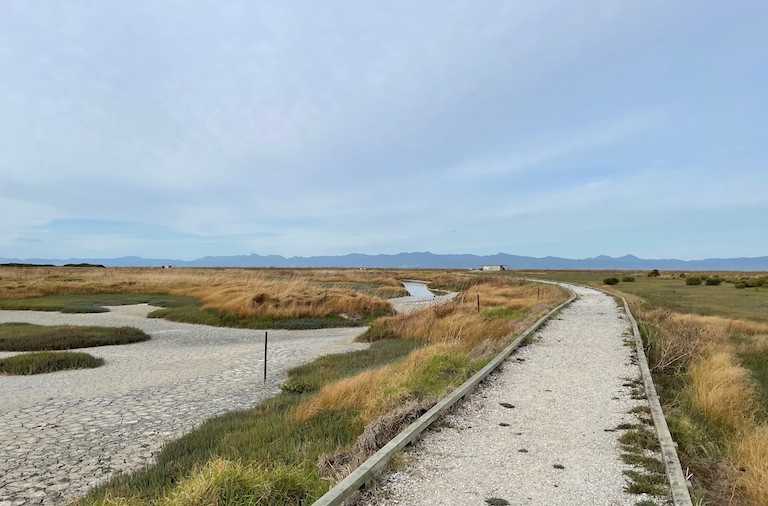
Photo: Pūkorokoro-Miranda Shorebird Centre area and walking trail to the bird hide
Day 2: Thames to Paeroa
This inland journey carries riders along the old railway corridor, once vital to the region’s goldfields. In Thames, the Goldmine Experience immerses visitors in the working life of 19th-century miners, while in Paeroa, the township’s preserved architecture and antique stores speak to its role as a hub for trade and farming in the late 1800s.
Before 1900, the Waihou River was the final challenge for travellers on the Hauraki Plains. Waka and steamers were the main way to get around, and those heading cross-country faced tough terrain. That all changed in 1928 when the Old Kōpū Bridge was built, linking Thames and the Hauraki Plains. As traffic grew, the bridge struggled to keep up, leading to the construction of the new Kōpū Bridge in 2011.
Today, the Old Kōpū Bridge occasionally reopens for walkers and cyclists, offering a rare chance to step onto a piece of industrial heritage. Keep an eye out for upcoming opportunities to experience this iconic structure, and stop to discover more about the history of the bridges at the Kōpū shelter.
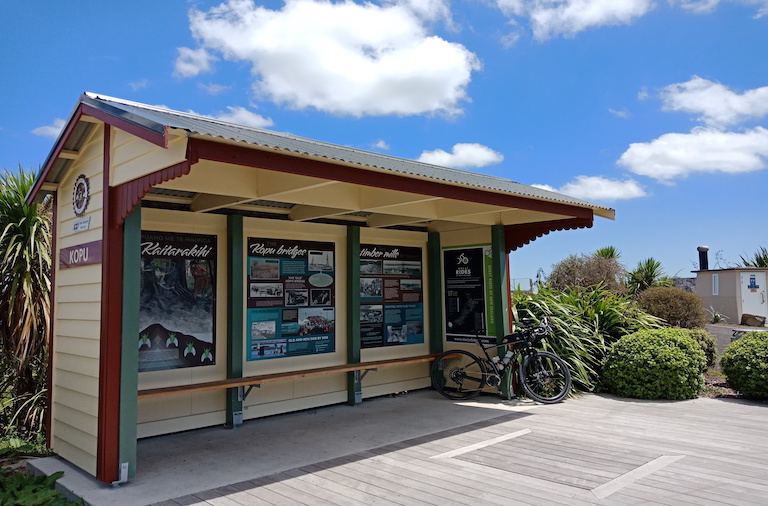
Photo: Kopu Shelter
Day 3: Paeroa to Waihi
Arguably the most dramatic section, the Karangahake Gorge is both geologically and historically significant. Riders encounter the towering Victoria Battery ruins - once the largest quartz-crushing plant in Australasia, before stepping back in time with a torch-lit passage through the 1,100m rail tunnel carved by hand. The gorge is also dotted with cyanide tank remains, tramways, and relics of an era when gold fever transformed the landscape.
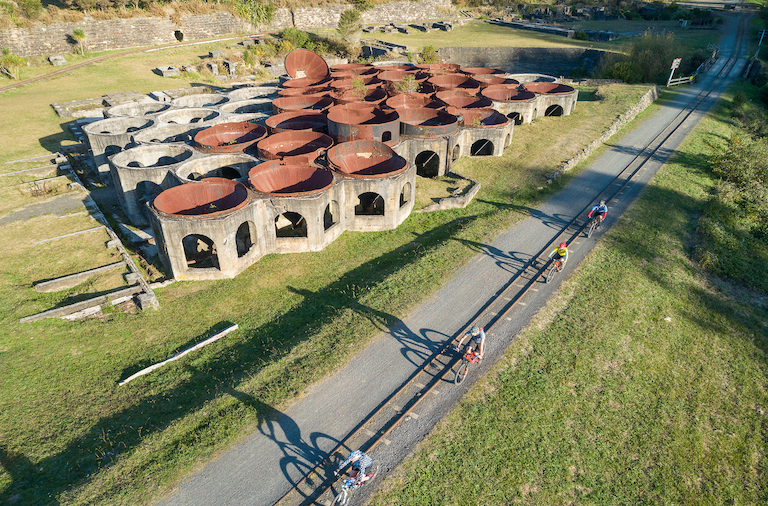
Photo: Victoria Battery
Day 4: Paeroa to Te Aroha
This quieter stretch reveals the pastoral heritage of the Waikato plains, leading to Te Aroha, a township renowned for its Edwardian spa history. At the base of Mount Te Aroha (The Mountain of Love), visitors can explore the country’s only surviving natural soda water geyser, which attracted tourists from the late 19th century seeking restorative mineral waters. The town’s spa architecture remains an elegant reminder of this era.

Photo: Te Aroha Domain
Day 5: Te Aroha to Matamata
The southern end of the Trail rolls through lush farmland and the Waihou River valley, following the paths early settlers once used for trade. The journey concludes in Matamata, a town with its own agricultural heritage, now internationally celebrated as the gateway to Hobbiton Movie Set, an evocative blending of storytelling, landscape, and identity.
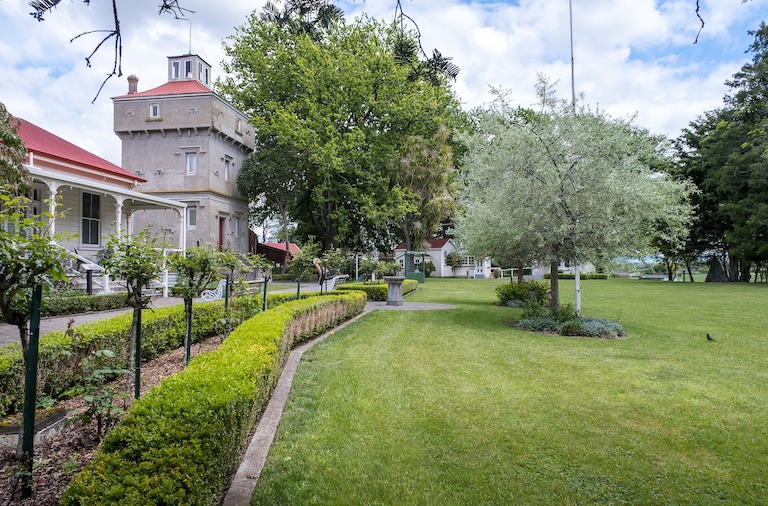
Photo: Firth Tower Museum - built in 1882. Visitors can enjoy the tranquil gardens, picnic under venerable oaks and explore the museum displays housed across 13 buildings.
The Hauraki Rail Trail is more than a cycle trail, it is a curated passage through centuries of human endeavour, natural evolution, and cultural identity. To ride it is to engage with New Zealand not just as scenery, but as story, a living, breathing landscape where the crunch of gravel beneath your wheels is underscored by the voices of history.
Research, Plan & Book Your Adventure
Whether you’re travelling solo, with family, or exploring as retirees, there’s something for everyone. And with planning made easy, this ride is more than a journey, it’s a holiday in itself.
Riding the Trail is free, so you can make your own bookings and travel totally independently. Alternatively, there are options to book supported tours, which have the advantage of providing planning, support, transport, and local knowledge of the Trail and region.
Bike hire, shuttles, luggage transfers, self guided tours, fully supported tours and accommodation are available from operators based on and around the Trail, with Kaiaua, Thames, Waihi, Paeroa, Te Aroha and Matamata being the major hubs.
Join a tour through the historic Karangahake Gorge with Waihi Bicycle Hire, or choose from one of three Trail-wide packages available through Hauraki Bike Hire.
Discover more about the Hauraki Rail Trail
For the latest news and stories, you can Follow the Trail on Facebook and Instagram, and sign up to the Quarterly Newsletter on the home page of the website.
The Hauraki Rail Trail is launching a brand new website in October 2025. The Trail Pages Highlights, comprehensive Trail Directory and Itineraries make it easier than ever to research, plan and book your adventure.
You can find more ride experiences and inspiration in the blog, and the new series of short films on Vimeo are a great way to get a real taste of the Trail.
« Back to articles